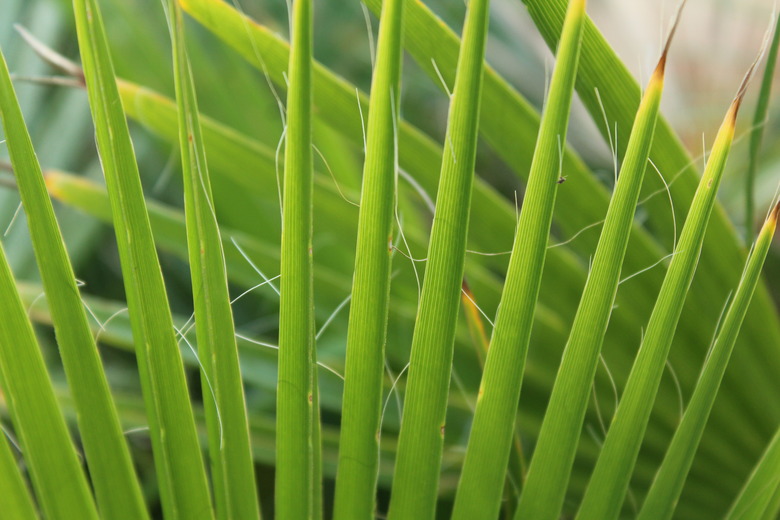Mexican Fan Palm Tree Care
Under ideal growing conditions, a young Mexican fan palm tree (Washingtonia robusta, USDA zones 9-11) can grow 3 to 10 feet a year, reaching heights of 100 feet or more. Known for keeping their dead leaves tucked around their trunks like a hula skirt, this iconic palm often lines highways and beaches in California and Florida. Their striking height makes the Mexican palm ideal for planting in groves and large areas but their thorny leaves and massive size make them a poor choice for yards.
Thatch Problems Abound
Thatch Problems Abound
Before considering a Mexican fan palm, know that maintaining them can be problematic. In mature trees, dead fronds usually drop off the tree as it grows. Younger trees, however, tend to hold onto these dead fronds. As the dying leaves collapse against the trunk, they create a shaggy skirt of dead, dry yellow or brown leaves known as thatch.
Many people consider this thatch a part of the character of a Mexican fan palm while others remove it. Those who remove the thatch do so because it creates a refuge for rats and other vermin as well as a fire hazard. Some cities legally mandate that tree owners must remove the thatch from their trees — a daunting task that requires a professional when the trees get taller.
If your tree is still short enough that you can remove the dead fronds yourself, wait to do so until the base of the dead leaves dries completely. When they have, prune them with a pruning knife or another type of sharp knife. Wipe the knife with a clean, alcohol soaked rag between cuts to avoid introducing or spreading any palm tree diseases.
Climate and Soil
Climate and Soil
Mexican fan palms prefer well-draining, moderately rich soil, but they can also survive in sand and poor soils. You can grow a young plant in a container to give your deck or patio a tropical look, but do not plant one in a small yard since they need large, open areas.
The Mexican fan palm is considered invasive in parts of California and Florida. If you live in an area where the Mexican palm is an unwelcome guest, consider planting a Guadalupe Palm (Brahea edulis, zones 10-11) in tropical climates or the hardier Mexican Blue Palm (Brahea armata, zones 8-11) instead. These species stay a bit smaller and aren't considered invasive.
Water and Fertilizer
Water and Fertilizer
Though it tolerates both salt and drought, water your Mexican fan palm deeply at least once a month. The fertilizer needs of Mexican fan palms will vary with the soil, but a general maintenance recommendation is to apply 1 1/2 pounds of 8-1-10-4 palm tree fertilizer for every 100 square feet of area every three months. An 8-1-10-4 fertilizer contains the ratio, by weight, of 8 parts nitrogen, 1 part phosphorus, 10 parts potassium and 4 parts magnesium.
Washingtonia Palm Diseases and Pests
Washingtonia Palm Diseases and Pests
Mexican palm trees can suffer from Gandoderma butt rot, a soilborne fungus that can infect all palm species. The fungus spreads upward from the soil until it destroys 80 to 90 percent of the bottom 3 to 5 feet of the trunk, causing leaves to drop and the tree to eventually die. There is no known cure or prevention for this fungus. Remove infected trees as soon as possible and avoid planting other palms in the area.
Similarly, there is no known treatment for Thielaviopsis trunk rot, which can cause the canopy to fall off the tree without warning. You may be able to prevent this disease by refraining from pulling off lower leaves before they are ready to drop and not wounding the tree with weed trimmers, climbing spikes or bad pruning techniques. There is also no chemical cure for Fusariam wilt, a fungal disease spread by the wind and infected pruning tools.
Mexican fan palm doesn't generally have problems with pests, but avoid buying plants with visible exit holes from borers.
